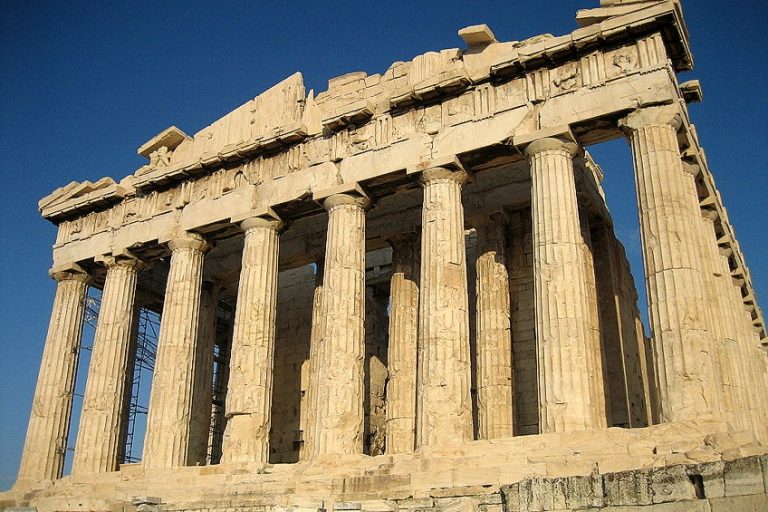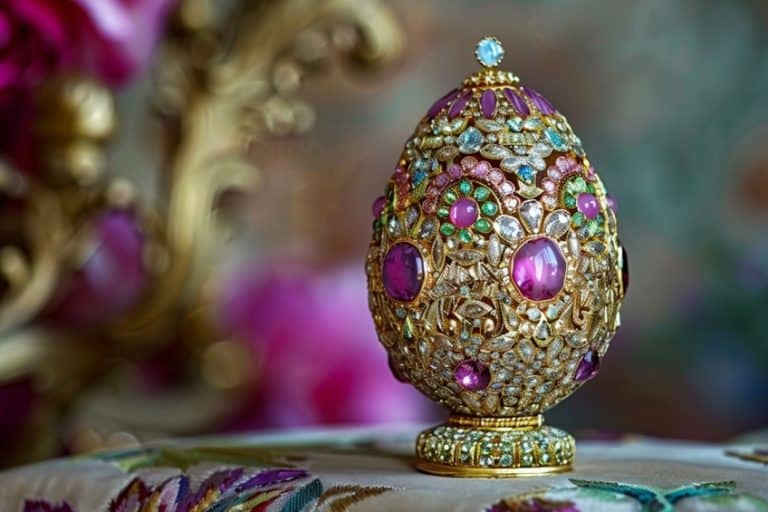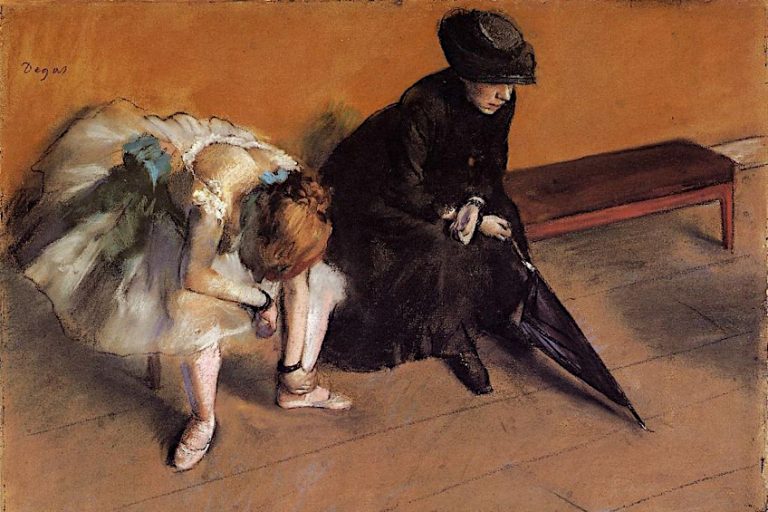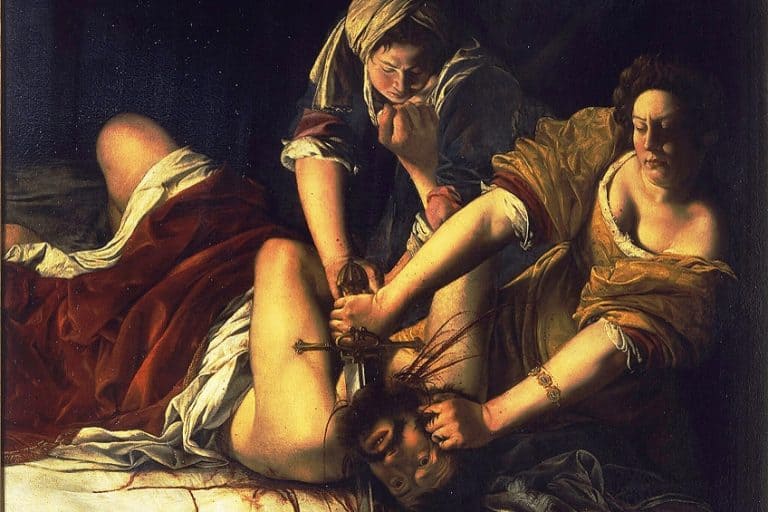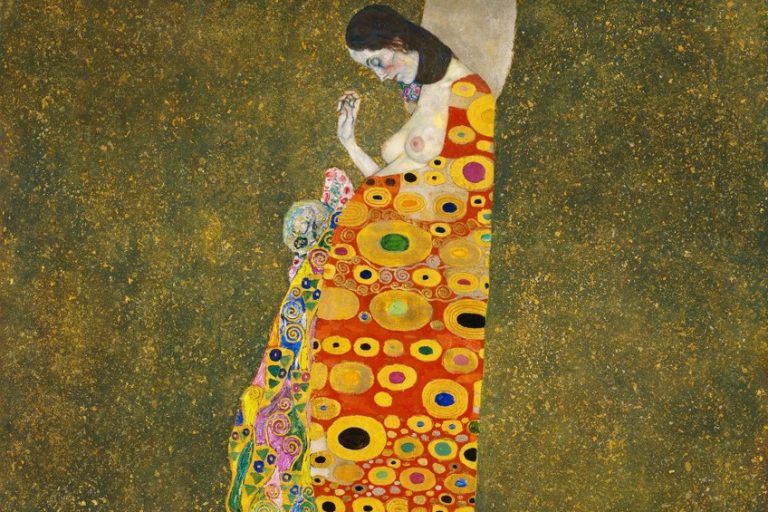Die Brücke – The Artists Behind German Expressionism
German Expressionism, a movement that sought to convey the raw and unfiltered emotions of the human experience, found its vibrant heart in a collective of artists known as Die Brücke, which translates to “The Bridge” in English. Emerging in the early 20th century, Die Brücke played a pivotal role in shaping the course of modern art. This dynamic group of innovative minds formed a bridge between the traditional and the avant-garde, forging a new path that challenged artistic conventions, and pushed the boundaries of expression. In this article, we delve into the fascinating world of Die Brücke, exploring the profound impact of this pioneering movement on the landscape of art and culture.
Introduction to Die Brücke: What Is the Bridge?
At the dawn of the 20th century, the art world was undergoing a profound transformation. Traditional notions of beauty and artistic representation were being shattered by a new wave of creativity, and one of the most influential movements to emerge from this era was Die Brücke, a German Expressionism artists’ group. Die Brücke, or the Bridge in English, was not just a collective of artists but a bold, revolutionary movement that redefined the very essence of art. In this section of the article, we will explore the essence of Die Brücke.

Defining Die Brücke Art Movement
Die Brücke, founded in Dresden in 1905, was a pioneering art movement that rebelled against stifling artistic conventions of the time, including academic and bourgeois standards. Its artists aimed to bridge the gap between the inner world of the artist and the viewer by expressing raw human emotions.
They rejected traditional techniques in favor of avant-garde approaches, featuring bold colors, sharp lines, and distorted forms that mirrored the anxieties of a changing world. Themes of alienation, urbanization, and the impact of modernity were central to their work.

Die Brücke thrived on experimentation and collaboration, with artists like Ernst Ludwig Kirchner (1880 – 1938), Karl Schmidt-Rottluff (1884 – 1976), and Emil Nolde (1867 – 1956) challenging norms in various art forms beyond painting, extending their unique vision to printmaking, sculpture, and architecture.
The Socio-Political Cauldron: The Context of Die Brücke Art Movement
The emergence of the Die Brücke art movement in the early 20th century was a response to a complex socio-political landscape in Germany. The turbulent socio-political climate of the time played a significant role in Die Brücke’s development. Germany was undergoing rapid industrialization, urbanization, and the upheaval of World War I. This atmosphere of change and uncertainty fueled the artists’ desire to create a new artistic language that could encapsulate the disorienting experience of modern life. To truly appreciate the significance and impact of this movement, it is essential to understand the stormy context in which it developed.

The Era of Transition
At the turn of the 20th century, Germany was undergoing a profound change. The nation had only recently been unified in 1871, and its industrialization and urbanization were proceeding at an astonishing pace. The old order was crumbling, and in its place, a new, modern society was emerging.
This period of transition brought with it a sense of uncertainty and dislocation, as traditional values collided with the rapid changes of modernity.
The Impact of World War One
The outbreak of World War I in 1914 had a profound and lasting impact on the psyche of the German people. The war brought death, destruction, and social upheaval on an unprecedented scale. The disillusionment and trauma experienced by many who had survived the war were deeply felt by artists who were members of Die Brücke. This anguish found its expression in their art, which often reflected the existential anxieties and emotional turmoil wrought by the conflict.
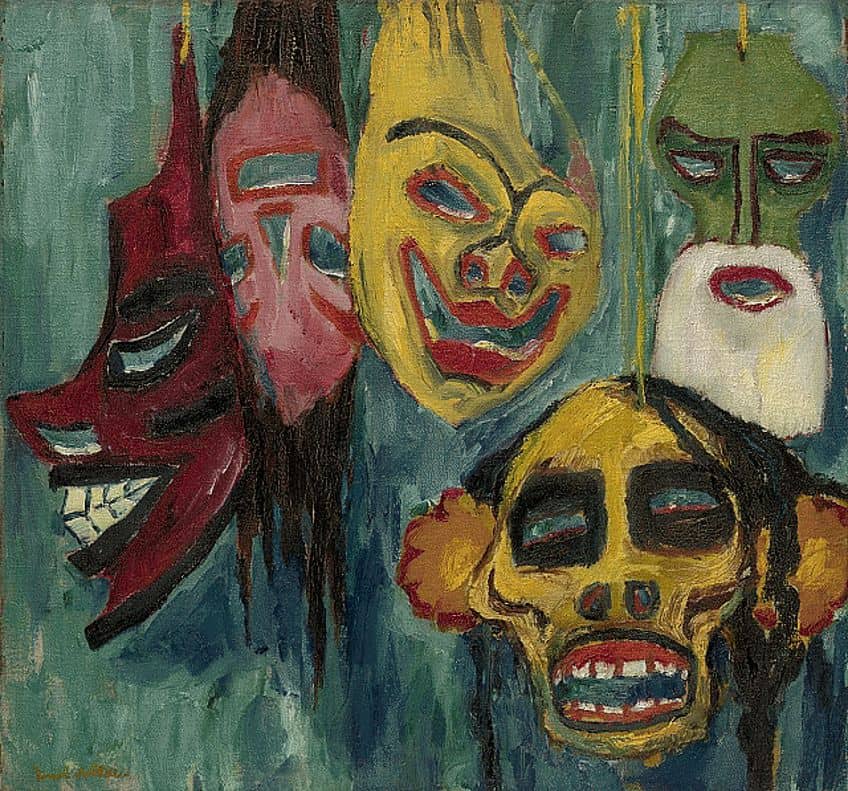
The Urban Experience
Even though Die Brücke was founded in Dresden, its artists were drawn from various parts of Germany. The urban environment played a crucial role in shaping their work. They were captivated by the energy and chaos of the city, which they sought to capture in their paintings.
Kirchner’s depictions of Berlin’s bustling streets, for instance, are vivid portrayals of urban life, conveying a sense of alienation and disorientation that many felt in the rapidly growing metropolises.
A Reaction Against Bourgeois Culture
The Die Brücke artists were rebels against the perceived cultural stagnation and stifling bourgeois values of the time. They rejected the academic and traditional artistic standards that had long dominated European art. Instead, they sought to create a new, authentic art that spoke to the emotional and psychological realities of the modern individual. Their work was characterized by bold colors, sharp lines, and distorted forms, all of which challenged conventional notions of beauty.
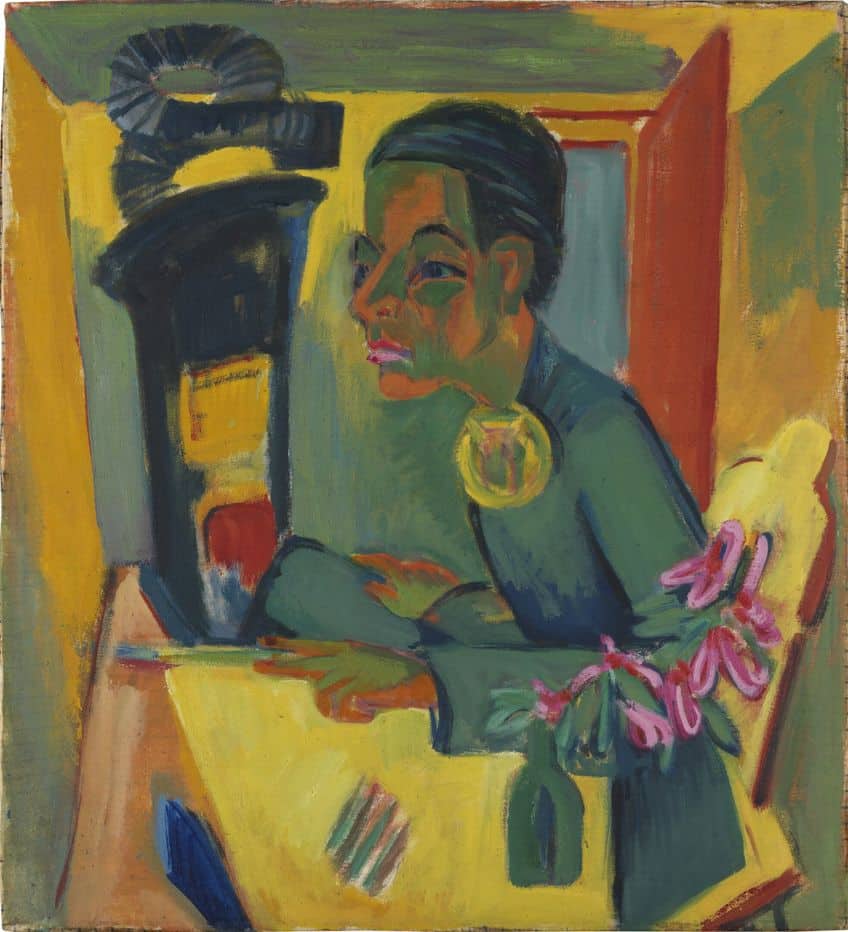
Breaking Boundaries: The Characteristics of Die Brücke Art
The Die Brücke art movement, which emerged in Germany in the early 20th century, represents a pivotal moment in the history of modern art. Characterized by its bold and innovative approach, the movement exhibited a set of distinctive characteristics that continue to captivate art enthusiasts and scholars alike.
Let us take a closer look at the technical and conceptual characteristics of this movement.
Expressionism and Emotion
At the core of Die Brücke art is the intense focus on unfiltered emotion and personal expression. The artists of Die Brücke rejected the limitations of conventional artistic ways, believing that true art should serve as a direct channel for conveying the profound depths of the human psyche. Their works are marked by a vivid portrayal of emotions, often in their most unfiltered and visceral forms. These artists aimed to capture the anxieties, joys, and sorrows of the human experience in a way that was immediate and unmediated.
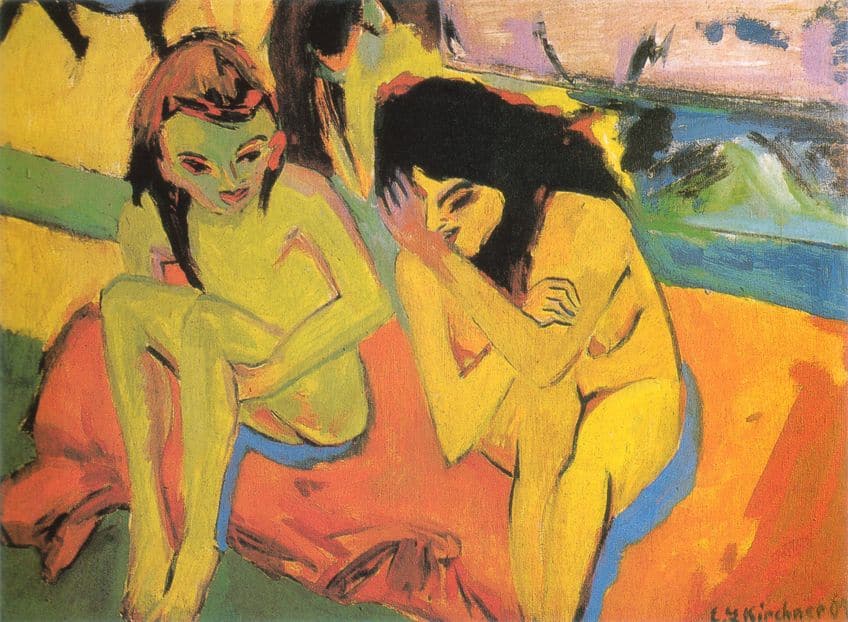
Primitivism and Non-Western Influences
Die Brücke artists were pioneers in their exploration of primitivism, which involved a deliberate departure from Western artistic traditions. Influenced by their exposure to African and Oceanic art at the Dresden Ethnographic Museum, they embraced non-naturalistic forms, distortion, and a rejection of conventional techniques.
This fascination with non-Western art inspired them to seek a deeper, more primal connection to the creative process, giving their work a distinct and unconventional appearance.
Bold Use of Color
Color played a central role in Die Brücke art. The artists used color not merely as a means of representation but as a powerful tool for conveying emotion and mood. Bold and vibrant hues were employed to evoke intense emotional responses from the viewer. These artists believed that color could be used to communicate the essence of a subject and the feelings it inspired, making their paintings and prints come alive with energy and intensity.
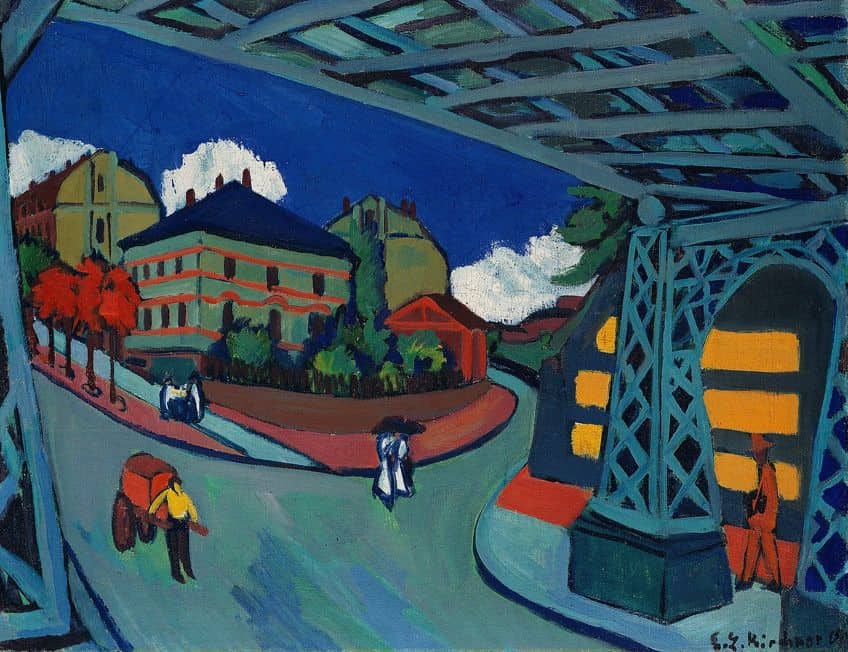
Urban Themes and Alienation
The Die Brücke artists were keen observers of the rapidly changing urban environment of their time. They frequently depicted scenes of city life, particularly the bustling streets of Berlin, Dresden, and other urban centers. These urban scenes often conveyed a sense of alienation and disorientation, reflecting the impact of modernity on the individual.
The city became a metaphor for the fragmented and tumultuous nature of contemporary life.
Printmaking and Graphic Arts
In addition to traditional painting, Die Brücke artists were prolific in the realm of printmaking and graphic arts. They viewed these media as accessible ways to disseminate their ideas and make their art more democratic. Woodcuts and lithographs were favored techniques, allowing for bold, expressive lines and a direct connection between the artist’s hand and the final work. These graphic works played a crucial role in spreading the Die Brücke ethos and aesthetic.

Rejecting the Bourgeoisie
Die Brücke artists were resistant to the bourgeois culture that had long dominated European art and society. They abandoned the intellectual and classic artistic standards of their time, seeking to create an art that was authentic and unfiltered.
Therefore, their work often explored themes of rebellion, nonconformity, and a rejection of the bourgeois values that they saw as stifling and constraining.
Collaborative Spirit
Die Brücke was not merely a group of like-minded artists but a collective with a shared vision. Collaboration was central to their ethos, and they worked together to promote their ideas and exhibit their art. They published an almanac that served as a manifesto for their artistic principles and organized exhibitions that showcased their work as a unified front. This collaborative spirit fostered a sense of community among the members and allowed for the cross-pollination of ideas.
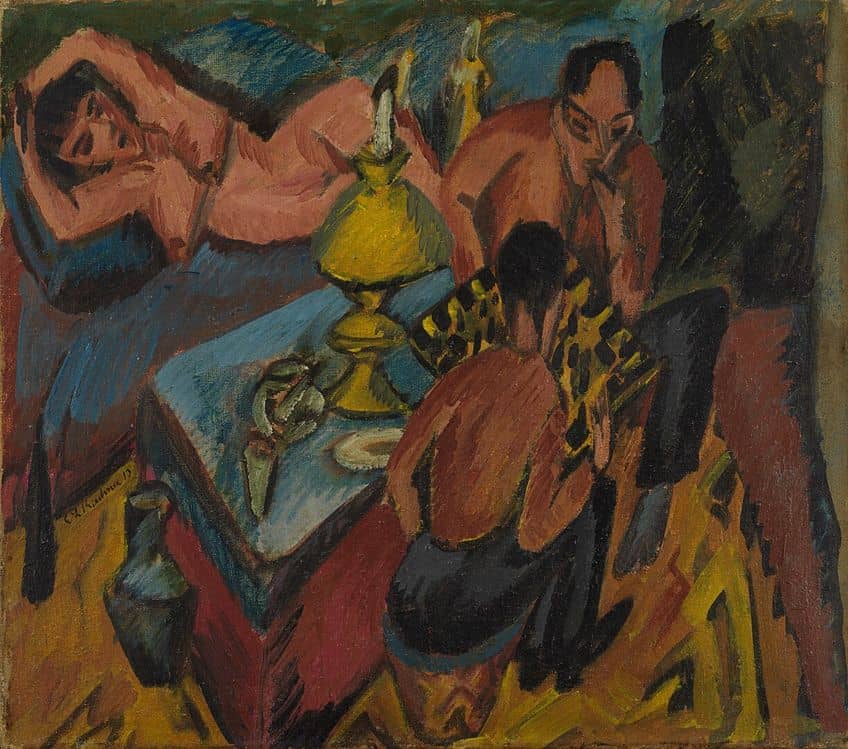
The Pioneers of Die Brücke: A Revolution in Art
The Die Brücke movement was initiated by a group of visionary artists who sought to redefine the very essence of artistic articulation. Led by Ernst Ludwig Kirchner and Karl Schmidt-Rottluff, these pioneers embarked on a revolutionary journey that would not only transform their own artistic careers but also inspire a new generation of creative minds.

Ernst Ludwig Kirchner (1880 – 1938)
| Date of Birth | 6 May 1880 |
| Date of Death | 15 June 1938 |
| Place of Birth | Aschaffenburg, Germany |
| Nationality | German |
| Style | German Expressionism and Modern art |
Ernst Ludwig Kirchner, a trailblazing artist and a founding member of the Die Brücke movement, holds a pivotal position in the annals of modern art. Born in 1880, Kirchner’s artistic journey unfolded against the backdrop of the profound cultural and social shifts of the early 20th century, which would go on to define his innovative and influential body of work.
One of the defining aspects of Kirchner’s art was his deep and abiding fascination with non-Western art, a passion ignited by his visits to the Dresden Ethnographic Museum. There, he encountered a rich tapestry of African and Oceanic art, which would leave an indelible mark on his creative vision. The forms and aesthetics of these non-Western art forms inspired Kirchner to embrace primitivism and distortion in his own work. This marked a radical departure from traditional European artistic conventions and laid the foundation for the unique style that would come to define him.
At the heart of Kirchner’s artistic persona lay a bold and dynamic style that boldly defied established norms.
His canvases were a playground for sharp, angular lines that seemed to dance across the surface, creating a sense of dynamic movement and tension. Vivid and unapologetic colors exploded from his brush, electrifying the canvas and infusing his works with intense emotional resonance. His fearless exploration of color and form was a testament to his commitment to unearthing the innermost depths of human experience through art.
Kirchner’s urban scenes stand as a testament to his uncanny ability to capture the pulse and chaos of the modern city. His depictions of bustling Berlin streets, in particular, speak to the alienation and disorientation experienced by individuals amidst the rapid transformation of urban life. The jagged lines, frenetic compositions, and juxtaposition of figures against the urban landscape created a sense of fragmentation and discord, mirroring the zeitgeist of a rapidly modernizing world.
Yet, amid the chaos and fragmentation, Kirchner’s art also revealed a profound exploration of the human psyche. His works exuded a sense of introspection and contemplation as if inviting viewers to peer into the innermost recesses of the human soul. Through his bold and daring exploration of the human experience, Kirchner confronted the anxieties, joys, and sorrows of a world in flux.
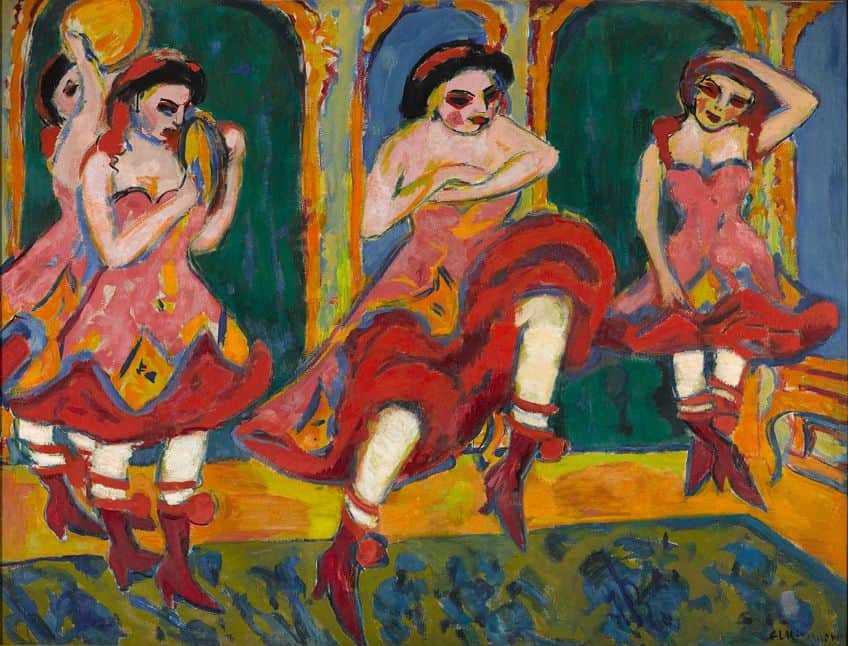
Ernst Ludwig Kirchner’s contributions to the Die Brücke movement and the broader world of art remain an enduring testament to his visionary spirit and artistic audacity. His fearless embrace of primitivism, his dynamic use of color and form, and his unflinching exploration of the human psyche all continue to inspire and resonate with artists and art lovers, underscoring the profound impact of his work on the evolution of modern art.
Karl Schmidt-Rottluff (1884 – 1976)
| Date of Birth | 1 December 1884 |
| Date of Death | 10 August 1976 |
| Place of Birth | Rottluff, Chemnitz, Germany |
| Nationality | German |
| Style | German Expressionism |
Karl Schmidt-Rottluff, a prominent figure within the Die Brücke movement, was born in 1884 and stands as an artist who left an indelible mark on the trajectory of modern art. Like his fellow Die Brücke members, Schmidt-Rottluff shared an unwavering commitment to breaking free from artistic conventions and pushing the boundaries of visual expression, contributing a unique perspective to the movement’s innovative spirit.
Schmidt-Rottluff’s artistic signature was defined by several distinct characteristics that set him apart within the Die Brücke cohort. His works were notable for their stark contrasts, a dramatic interplay of light and shadow that lent a powerful and dynamic quality to his compositions. These high-contrast elements created a sense of tension and drama, drawing viewers into his visual narratives with a magnetic force.
In his pursuit of essential expression, Schmidt-Rottluff favored simplified forms.
He sought to distill the complexity of his subjects into their most fundamental and iconic elements. This reductionist approach was a deliberate rejection of the overly ornate and intricate styles of traditional art, aligning with Die Brücke’s broader mission to create an art that was immediate and unadorned, capable of conveying raw and unfiltered emotion.
In collaboration with Ernst Ludwig Kirchner and other members of Die Brücke, Schmidt-Rottluff played a pivotal role in the publication of the group’s almanac, released in 1906. This publication served as a manifesto for Die Brücke’s artistic principles and ideals, setting forth a bold vision for the future of art. It was a declaration of their commitment to forging a new path in the art world, one that challenged established norms and united artists who shared their dissatisfaction with the existing status quo.
Schmidt-Rottluff’s involvement in this seminal publication underscored his role as a driving force within Die Brücke, contributing not only his distinctive artistic style but also his dedication to fostering a sense of unity and purpose among the movement’s members. Together with his peers, he created a platform for the dissemination of their radical ideas and artistic innovations.
Karl Schmidt-Rottluff’s art continues to be celebrated for its powerful contrasts, simplified forms, and unwavering commitment to the core principles of Die Brücke. His contributions to the movement and to the broader world of modern art serve as a testament to his visionary spirit, as well as his instrumental role in shaping the trajectory of artistic expression in the 20th century. His legacy endures as an inspiring example of an artist who fearlessly challenged the status quo and reimagined the possibilities of visual art.
Other Notable Members
While Kirchner and Schmidt-Rottluff were at the forefront of Die Brücke, the movement attracted other talented artists who shared their vision. Emil Nolde, an artist renowned for his powerful use of color, was a notable member who contributed to the group’s exploration of emotional intensity and expression. As the movement gained momentum, more artists joined its ranks, including Max Pechstein (1881-1955), Erich Heckel (1883-1970), and Otto Mueller (1874-1930), among others.
Each of these individuals brought their unique perspectives and artistic sensibilities to the collective, further enriching the tapestry of Die Brücke’s creativity.
Famous the Bridge Paintings
This section of the article invites readers on a captivating painting journey through the vibrant and revolutionary world of Die Brücke. It delves into a selection of iconic artworks created by the visionary artists of Die Brücke. Each painting discussed embodies the movement’s radical spirit, vividly capturing the raw emotions, dynamic compositions, and striking color palettes that define the essence of German Expressionism. Join us as we explore the masterpieces that continue to resonate with art enthusiasts and scholars alike, offering a timeless glimpse into a tumultuous era of artistic transformation.
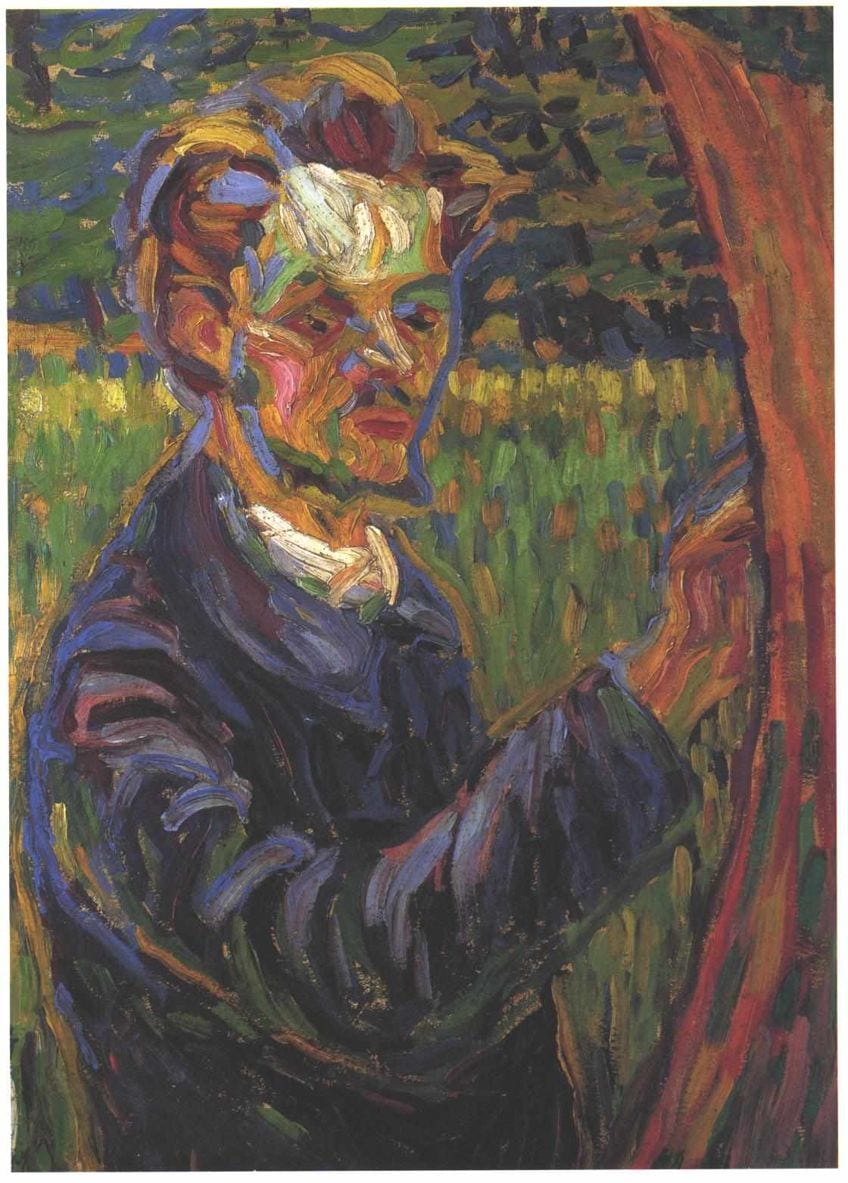
Street, Berlin (1913) by Ernst Ludwig Kirchner
| Title | Street, Berlin |
| Date | 1913 |
| Medium | Oil on canvas |
| Dimensions (cm) | 120.6 x 91.1 |
| Location | Art Institute of Chicago, Illinois, United States |
Street, Berlin by Ernst Ludwig Kirchner is an iconic work of German Expressionism, showcasing the artist’s bold and innovative approach to capturing the urban experience of early 20th-century Berlin. The painting presents a chaotic, bustling cityscape that immediately engages the viewer with its dynamic composition and vibrant use of color.
The composition of Street, Berlin is characterized by a sense of movement and energy. The canvas is divided into two main diagonal axes, one from the upper left to the lower right and the other from the upper right to the lower left. These intersecting lines create a sense of visual tension and dynamism. The composition seems to reflect the pace and disorientation of urban life in Berlin during this era. Kirchner employs a striking color palette that adds to the intensity of the scene. The bright, almost unnatural colors—vivid pinks, bold blues, and vibrant purples—contribute to the sense of heightened emotion and unease.
These colors are not intended to represent reality but rather to convey the emotional impact of the urban environment.
The contrasts in Street, Berlin are a hallmark of Kirchner’s style. Dark shadows sharply juxtapose with the vividly colored figures and scenery, creating a sense of dramatic tension. The artist uses these contrasts to emphasize the chaotic and disorienting nature of the modern city.
The figures in the painting are rendered in a simplified, almost primitive style. They appear distorted, with elongated and exaggerated forms. This distortion reflects Kirchner’s fascination with primitivism and his desire to convey the inner emotional state of the figures rather than their physical accuracy. The people in the street seem isolated from one another, encapsulating a sense of urban alienation.
The painting reflects the estrangement experienced by individuals in the rapidly modernizing city. The fragmented figures in the street evoke a sense of disconnection and solitude in the midst of a bustling crowd. Street, Berlin captures the anxiety and disorientation brought about by the rapid changes of the early 20th century. The disjointed composition, distorted figures, and intense colors convey a sense of unease, reflecting the impact of modernity on the individual psyche.

Kirchner’s exploration of primitivism is evident in the simplified and distorted forms of the figures. This reflects his interest in non-Western art and his belief that these artistic styles could convey a more authentic and immediate experience of the world. Above all, Street, Berlin is an expression of bare emotion. Kirchner’s use of color, form, and composition is intended to evoke a visceral response from the viewer. The painting is less concerned with literal representation than with conveying the emotional intensity of the urban experience.
Portrait of Emy (1919) by Karl Schmidt Rottluff
| Title | Portrait of Emy |
| Date | 1919 |
| Medium | Oil on canvas |
| Dimensions (cm) | 71.9 x 65.4 |
| Location | Private collection |
Portrait of Emy showcases Karl Schmidt-Rottluff’s distinctive style within the broader context of the Die Brücke movement. This artwork exudes a sense of boldness and innovation, reflecting the artist’s departure from traditional creative rules. The composition of the painting is focused on the portrait of Emy, a central subject. The canvas is filled with her presence, and the viewer’s attention is immediately drawn to her expressive face. Emy gazes directly at the viewer with a striking and intense expression.
Schmidt-Rottluff employs a rich and unconventional color palette in this work. The background is composed of vibrant reds and oranges, creating a visually stimulating contrast with Emy’s complexion and green dress. Her multi-colored face, which serves as a focal point, intensifies the visual impact. The artist uses bold and confident brushwork to depict Emy. Her face is rendered with a sense of immediacy and raw feeling. The brushstrokes are visible and expressive, contributing to the overall energy of the painting.
The texture of the canvas adds depth and tactile quality to the work.
Emy’s expression is enigmatic and intense. Her eyes seem to convey a complex array of sentiments, from vulnerability to defiance. The artist captures a profound sense of humanity and depth in this portrayal, suggesting that Emy’s personality and inner life are at the forefront of the composition.
The artist places a strong emphasis on capturing the emotional depth of the subject. Emy’s direct gaze challenges the viewer, inviting them to engage with her on a visceral level. Her expression evokes a sense of inner turmoil and complexity, aligning with Die Brücke’s focus on expressing natural emotions.
The bold and non-naturalistic use of color, particularly the intense reds and oranges, is a hallmark of Schmidt-Rottluff’s style. These vivid colors are not meant to mimic reality but to convey the intensity of the emotional experience. They create a sense of vibrancy and visual tension.
Portrait of Emy highlights the unique personality and humanity of the subject. The artist’s portrayal of Emy is not a generic representation but a deeply personal and intimate exploration of her character. This emphasis on the individual aligns with Die Brücke’s rejection of conformity and the bourgeois culture of the time.
Schmidt-Rottluff’s work in this painting embodies the principles of German Expressionism and its commitment to forging a new path in the world of art. The movement aimed to bridge the gap between the inner world of the artist and the viewer, and Portrait of Emy accomplishes this by inviting viewers to engage with the emotional landscape of the subject.
The Reception of Die Brücke’s Art
The first public exhibition of Die Brücke’s artists took place in Dresden in 1906 at the renowned Ernst Arnold Gallery. This landmark event was a seminal moment in the history of modern art, marking the group’s official debut to the public. However, the response to their artworks was far from uniform.
When Die Brücke’s art was first exhibited, it elicited a spectrum of reactions that mirrored the diversity of artistic innovation they represented.
Intrigue and Controversy
Some viewers and critics were genuinely intrigued by the movement’s innovative and bold approach to art. Die Brücke’s rejection of traditional artistic norms and its fearless embrace of unfiltered feeling resonated with those who sought a break from the stifling conventions of the time. These individuals recognized the movement’s potential to redefine artistic expression and welcomed the new artistic frontier it presented.

Outrage and Labeling As “Degenerate”
On the flip side, Die Brücke’s departure from established norms was met with shock and outrage by some quarters. The extreme colors, misshapen forms, and plain emotive content of their works challenged the prevailing artistic sensibilities of the era.
Critics who clung to traditional artistic values labeled the art as “degenerate” and accused the artists of corrupting the moral fabric of society.
Recognition and Influence
Over time, as the Die Brücke artists persisted in their exploration and their exhibitions became more frequent, they began to gain recognition and acclaim. Artists like Ernst Ludwig Kirchner and Emil Nolde, became influential voices in the art world. Their distinctive style and unflinching commitment to authenticity left an indelible mark on the trajectory of modern art.
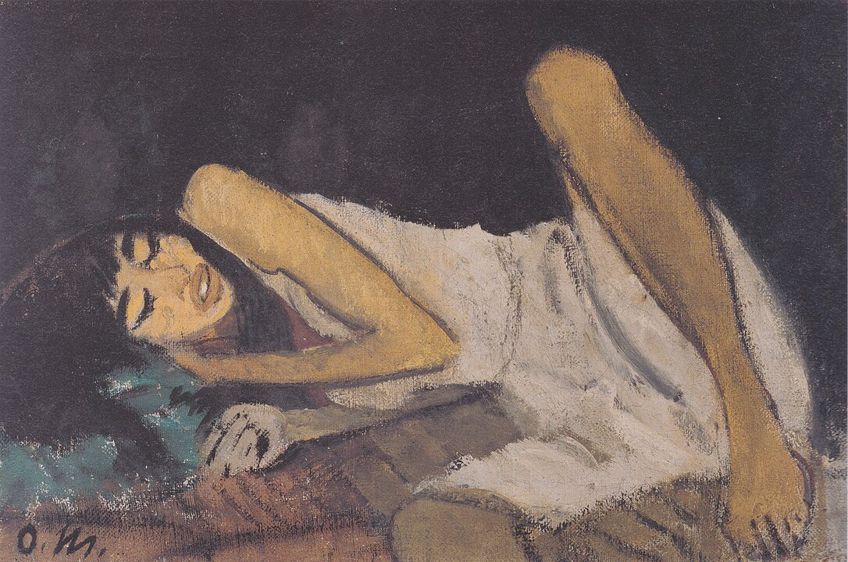
The Legacy of Die Brücke
The influence of the Die Brücke art movement on the evolution of art history cannot be overstated. Beyond its immediate impact during its active years, Die Brücke left an enduring legacy that reverberated through the 20th century and continues to influence art to this day. In essence, the Die Brücke art movement acted as a transformative bridge between the traditional art of the past and the avant-garde movements of the future.
Their willingness to challenge artistic norms, embrace innovation, and prioritize authenticity contributed significantly to the rich tapestry of 20th-century art history.
Pioneering Expressionism
Die Brücke artists, with their emphasis on raw emotion and the inner psyche, laid the foundation for Expressionism. Expressionist movements, both in Germany and internationally, drew inspiration from Die Brücke’s bold use of color, distorted forms, and the unfiltered portrayal of human experiences. Artists like Edvard Munch, Wassily Kandinsky, and Egon Schiele embraced Expressionism, further solidifying its place in the pantheon of modern art movements.
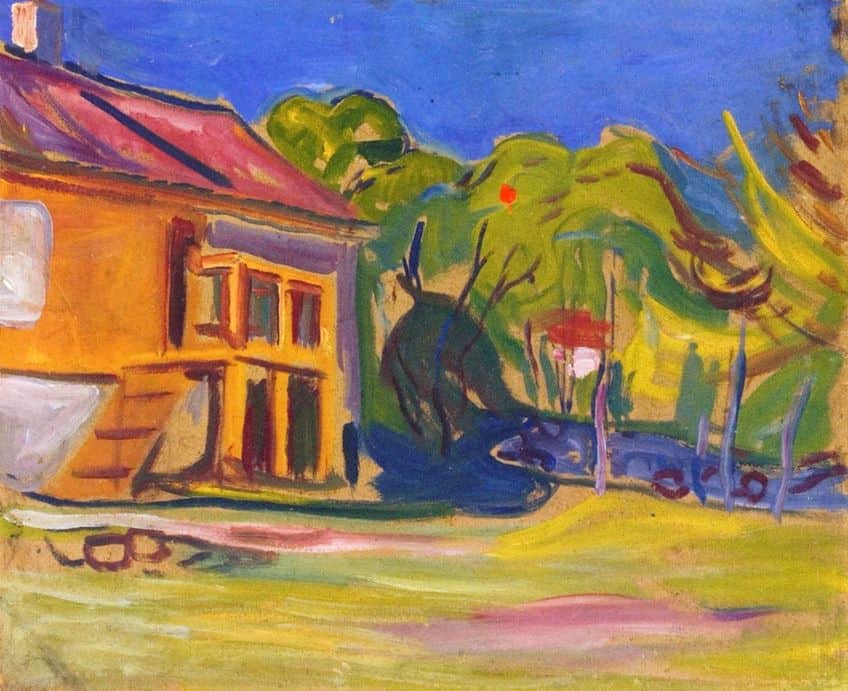
Revitalizing Printmaking and Graphic Arts
The Die Brücke artists’ enthusiasm for printmaking and graphic arts was revolutionary. Their woodcuts and lithographs showcased a new level of experimentation in these mediums. This resurgence in printmaking not only expanded the horizons of artistic expression but also led to the flourishing of graphic design and illustration in the 20th century.
Die Brücke’s impact can be seen in the works of later graphic artists like Kathe Kollwitz and the Bauhaus movement.
Paving the Way for Avant-Garde Movements
Die Brücke’s rejection of bourgeois culture and commitment to authenticity served as a beacon for subsequent avant-garde movements. Their quest for a more direct and unmediated connection between the artist and the audience influenced movements such as Dadaism, Surrealism, and Abstract Expressionism. These movements embraced Die Brücke’s spirit of rebellion and experimentation.
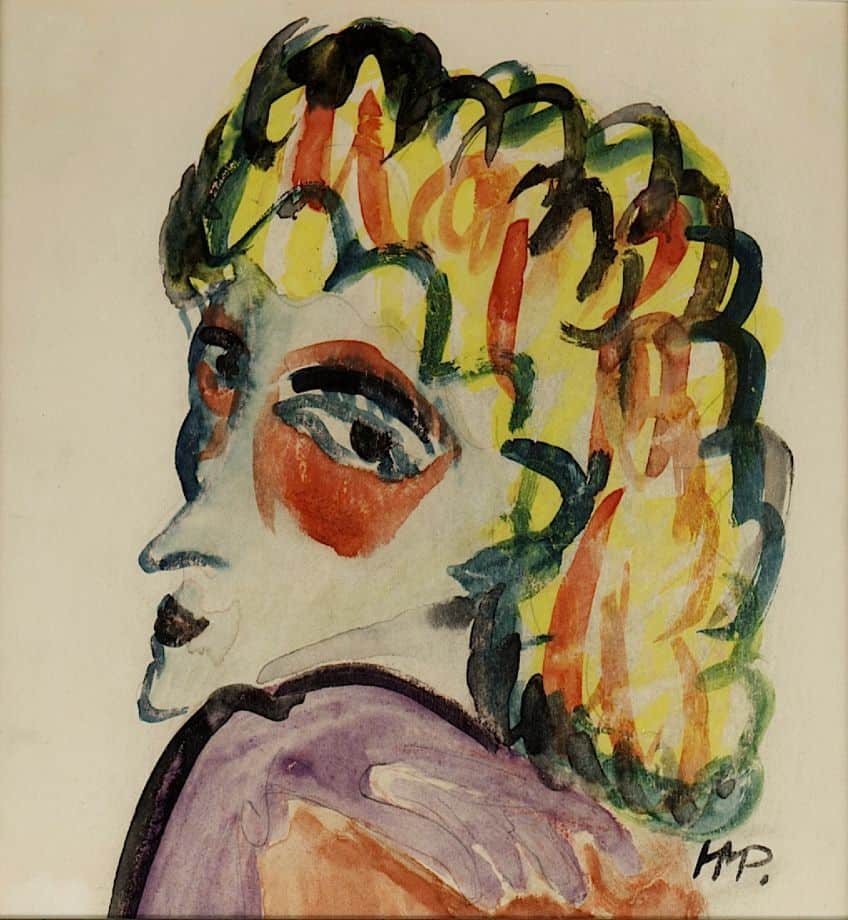
Innovations in Subject Matter
Die Brücke artists were among the first to delve into the darker aspects of existence, exploring themes of alienation, urbanization, and the impact of modernity on the individual. This shift in subject matter encouraged artists to tackle societal and psychological issues in their work. These themes would become central in various 20th-century art movements that aimed to grapple with the complexities of contemporary life.
In conclusion, the Bridge, better known as Die Brücke, stands as a long-lasting demonstration of the revolutionary spirit of German Expressionism. This movement bridged the chasm between tradition and innovation, forging a path where emotion, primitivism, and basic human experience converged on canvas and paper. The artists of Die Brücke boldly challenged artistic conventions, leaving an indelible mark on the course of modern art. Their vibrant and intense creations continue to captivate and inspire, reminding us of the power of art to connect us to the profound depths of the human psyche. In this dynamic world of the Bridge, the legacy of German Expressionism endures, inviting us to cross over into a realm of artistic innovation and unfiltered emotion.
Frequently Asked Questions
What Was Die Brücke Making Art in Response To?
Die Brücke was making art in response to the profound cultural and social changes of the early 20th century. At the heart of their artistic mission was a reaction against the constraints of tradition, academic norms, and bourgeois culture. The artists of Die Brücke sought to break free from these conventions, using their art as a means to express the raw and unfiltered emotions of the human experience in the face of a rapidly modernizing world. They grappled with the alienation and disorientation brought about by urbanization, the impact of World War One, and a desire to create an authentic and immediate form of artistic expression. In essence, their art was a response to the tumultuous and transformative zeitgeist of their era, pushing the boundaries of artistic innovation in the process.
How Did the Die Brücke Art Movement End and Why?
The Die Brücke art movement gradually disbanded over time due to a combination of internal and external factors. By the outbreak of World War One in 1914, some members had already departed the group, and the war further dispersed the artists as they faced military service and its associated disruptions. Additionally, differences in artistic vision and personal conflicts emerged among the core members. As the war came to an end, the original unity and energy of Die Brücke had waned. By the early 1920s, the movement had largely dissolved, although individual artists continued to pursue their careers. Ultimately, Die Brücke’s end can be attributed to a combination of artistic evolution, external circumstances, and internal dynamics that led to its natural conclusion as an organized artistic collective.
Nicolene Burger is a South African multi-media artist, working primarily in oil paint and performance art. She received her BA (Visual Arts) from Stellenbosch University in 2017. In 2018, Burger showed in Masan, South Korea as part of the Rhizome Artist Residency. She was selected to take part in the 2019 ICA Live Art Workshop, receiving training from art experts all around the world. In 2019 Burger opened her first solo exhibition of paintings titled, Painted Mantras, at GUS Gallery and facilitated a group collaboration project titled, Take Flight, selected to be part of Infecting the City Live Art Festival. At the moment, Nicolene is completing a practice-based master’s degree in Theatre and Performance at the University of Cape Town.
In 2020, Nicolene created a series of ZOOM performances with Lumkile Mzayiya called, Evoked?. These performances led her to create exclusive performances from her home in 2021 to accommodate the mid-pandemic audience. She also started focusing more on the sustainability of creative practices in the last 3 years and now offers creative coaching sessions to artists of all kinds. By sharing what she has learned from a 10-year practice, Burger hopes to relay more directly the sense of vulnerability with which she makes art and the core belief to her practice: Art is an immensely important and powerful bridge of communication that can offer understanding, healing and connection.
Nicolene writes our blog posts on art history with an emphasis on renowned artists and contemporary art. She also writes in the field of art industry. Her extensive artistic background and her studies in Fine and Studio Arts contribute to her expertise in the field.
Learn more about Nicolene Burger and the Art in Context Team.
Cite this Article
Nicolene, Burger, “Die Brücke – The Artists Behind German Expressionism.” Art in Context. December 5, 2023. URL: https://artincontext.org/die-brucke/
Burger, N. (2023, 5 December). Die Brücke – The Artists Behind German Expressionism. Art in Context. https://artincontext.org/die-brucke/
Burger, Nicolene. “Die Brücke – The Artists Behind German Expressionism.” Art in Context, December 5, 2023. https://artincontext.org/die-brucke/.




